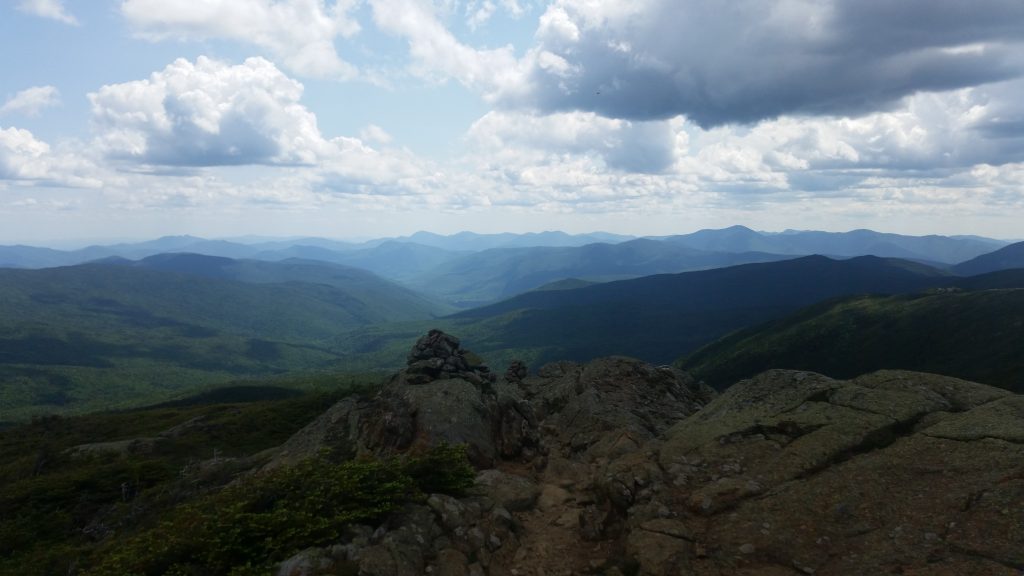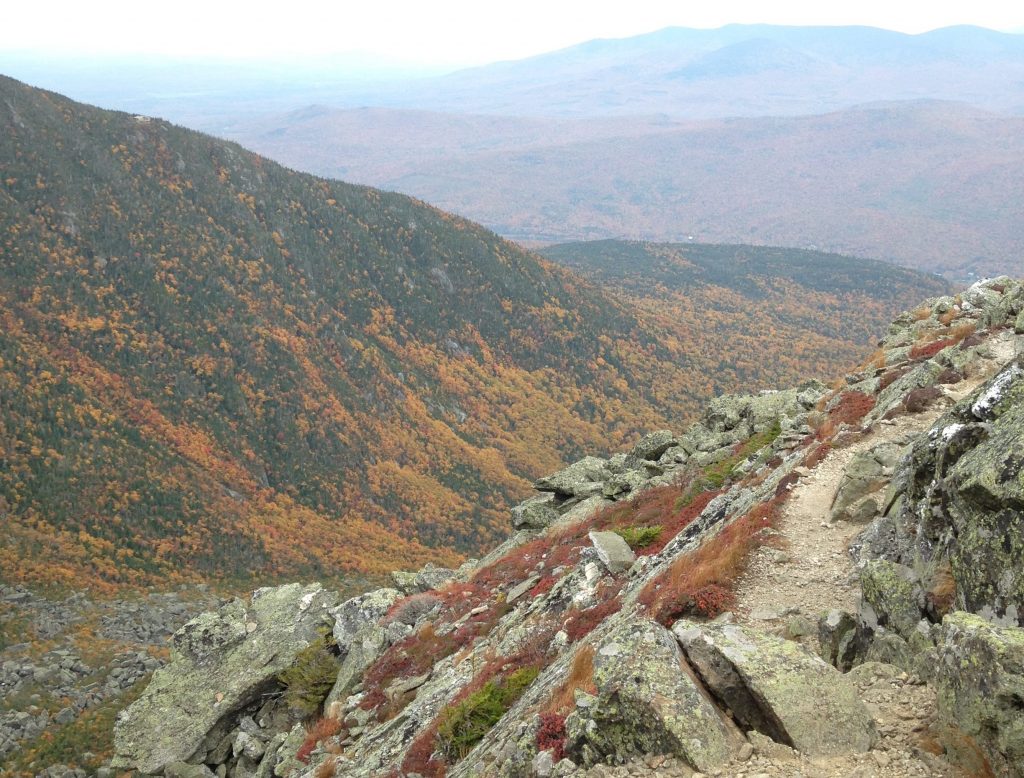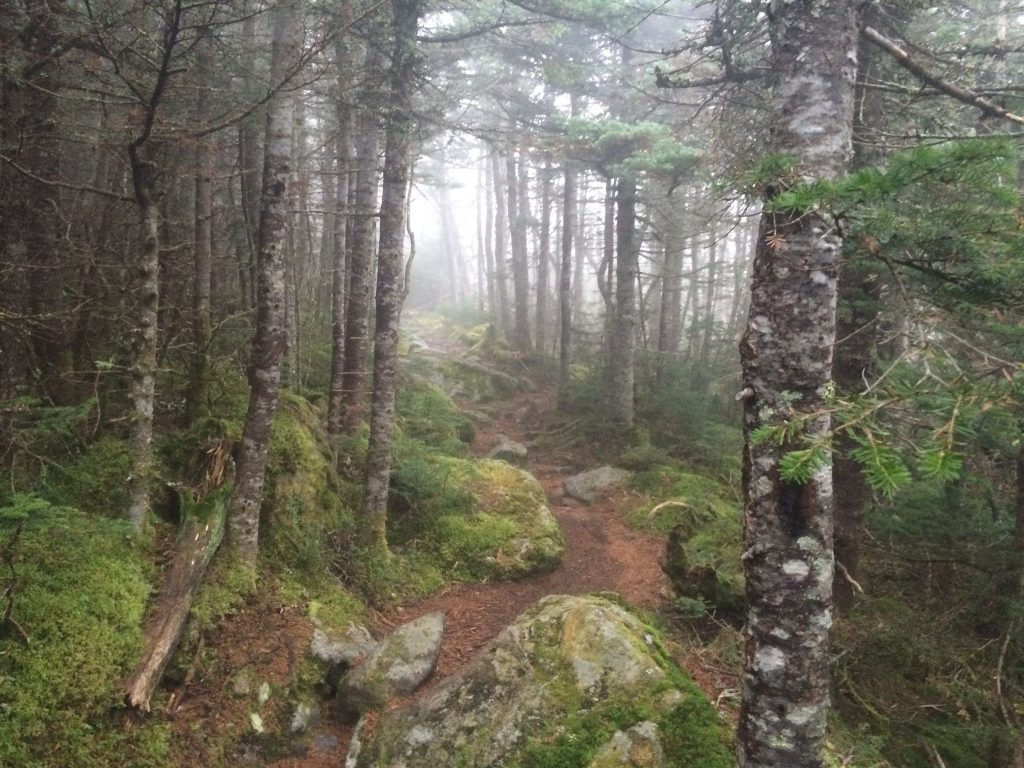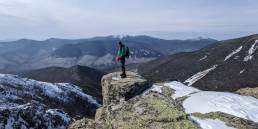For many people, just getting to the top of a New Hampshire 4,000-footer is a big accomplishment. For others, summiting all 48 of the state’s 4,000-footers is the ultimate goal and a sign that you’ve “made it” as a New England hiker.
But, for a select few, the White Mountains and New Hampshire’s 4,000-footers get in your blood. So, the idea of stopping at just 48 seems ludicrous. For these people, they move on to tackling more challenging ways to summit the New Hampshire 48, whether by linking them, attempting them in different seasons, or exploring them by different trails.

The Big Hikes
In many cases, hiking your first 4,000-footer involves getting out of your comfort zone, accepting a new physical challenge, and returning to your car with a blend of jubilation and exhaustion. Perhaps it’s the desire to recreate this feeling that leads some to move on from the 48 summits to the White Mountains’ classic long, hard hikes.
Presidential Traverse
The most notable, the 18-plus mile Presidential Traverse climbs over 8,500 feet while summiting seven New Hampshire 4,000-footers. For planning out your journey, this includes Madison, Adams, Jefferson, Washington, Monroe, Eisenhower, and Pierce. Some ambitious hikers even continue the extra couple of miles to tag the summit of Mount Jackson.
Carter-Moriah-Wildcat Traverse
Although the Presidential Traverse gets most of the attention and has more climbing, many insist that a Carter-Moriah-Wildcat Traverse is more difficult. Helping it earn this reputation, its steep rock trails and 7,200 feet of climbing take you over six 4,000-foot summits. Here, that list covers Moriah, South Carter, Middle Carter, Carter Dome, Wildcat A, and Wildcat D. However, losing the majority of the elevation previously gained and having to reclaim it near the middle at Carter Notch really make the Carter-Moriah-Wildcat Traverse feel difficult.
Pemi Loop
While traverses are great, sometimes you want to go big but only have access to one car. Here is where the Pemi Loop rules. The route, as you may know, combines two of the White Mountains’ classic traverses—Franconia Ridge and the Bonds—into what Backpacker Magazine has labeled the country’s second-hardest day-hike.
Covering over 30 miles and 9,000 feet of elevation gain, this legendary loop hike tags the summits of nine New Hampshire 4,000-footers. This time, you’ll reach Flume, Liberty, Lincoln, Lafayette, Garfield, South Twin, West Bond, Bond, and Bondcliff. The truly ambitious and fit will then add the summits of Galehead, Zealand, and North Twin for an almost 40-mile day that summits 12 peaks.

Gridding
Although the big hikes present equally large challenges, they can all feasibly be done in a day. For those looking for a longer-term commitment, on the other hand, you can attempt “gridding.” Gridding is defined as hiking every New Hampshire 4,000-footer in every month of the year. These journeys amount to a grand total of 576 summits and appeal to those of us who love checking boxes off our lists.
Until this January, completing the grid was considered a multi-year objective—that is, until Sue Johnston of Littleton, NH, became the first person to do it in a calendar year. And, according to the definitive website for gridders, 48×12.com, only 70 people have completed the whole shebang.
Named for the 48 x 12 spreadsheet used to document ascents, gridding adds the challenge of facing each and every mountain in all possible conditions. That covers the snow and ice of winter to the mud of spring to the heat and humidity of summer to the treacherous leaves of fall.

Red-Lining
If the idea of gridding sounds overly ambitious to you, red-lining will sound downright crazy. While hiking the New Hampshire 48 and gridding revolve around summiting the White Mountains’ highest peaks, red-liners seek to hike every mile of every trail, including viewpoints, campsites, and spur trails (approximately 1,420 miles) found in the AMC White Mountain Guide.
If that sounds like a lot of mileage, take into consideration that many of the trails are out-and-backs or crisscross with others. Typically, this forces red-liners to hike far more miles than just the 1,420 miles required.
Named after the act of highlighting completed trail sections, red-lining is most frequently done over multiple years. What’s truly incredible about it is, considering its relative closeness to major metropolitan areas and hiking’s surging popularity, only 35 people have finished the endeavor. One includes EMS customer Bill Robichaud, who we featured back in 2015:
While summiting all 4,000-footers is an incredible accomplishment, you don’t have to stop there! New Hampshire’s White Mountains can be explored and experienced in so many different ways. Whether you want to repeat your favorites, tackle the hardest, grid, red-line, or invent some new way to keep the challenge alive, just remember that the 48th summit doesn’t have to be your last.
Tim Peck
A former child model, Tim spent a portion of his youth gracing the pages of Sunday paper advertisements for many now-defunct department stores. Living responsibility/rent-free with his parents into his thirties, Tim pursued climbing, skiing, and biking while accumulating an impressive amount of time in the mountains (and gear). Now almost grown up, he lives in central New Hampshire with his wife, Australian Shepherd, and cat. Relentlessly pursuing the dream, Tim's modest life ambitions are to ski all 12 months of the year, climb 5.12, and live in a van.
Related Posts
April 12, 2024
Explore Like a Local: The Outdoor Mecca of North Conway, NH
There's a lot to love about this New…
April 3, 2024
5 Things To Do in the Boston Area During Mud Season
Adventure opportunities are abundant…




